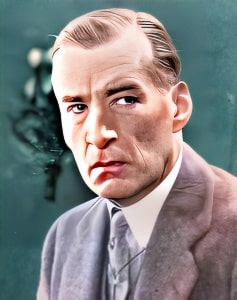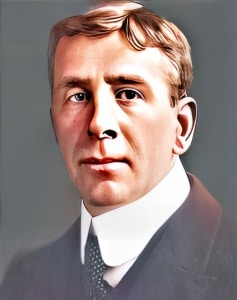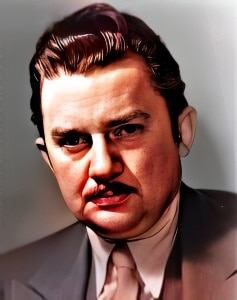 Thomas G. Lingham, born on April 7, 1870, embarked on a remarkable journey through the annals of early Hollywood, leaving an indelible mark as a stage performer turned film actor.
Thomas G. Lingham, born on April 7, 1870, embarked on a remarkable journey through the annals of early Hollywood, leaving an indelible mark as a stage performer turned film actor.
With a career spanning both the silent and early sound eras, Lingham’s versatility shone through as he portrayed villains, or “heavies” as they were known in the industry, in over 100 motion pictures.
Born in Indianapolis, Indiana, to actress Katherine Fletcher and renowned stage actor Matheis V. Lingham, Thomas inherited a theatrical legacy. His father, a leading player on Broadway in the late 19th century, set the stage for Thomas’s future in the world of entertainment.
Lingham’s own journey into entertainment commenced in 1894 when he started performing in operatic productions. For five years, he shared the stage with theatrical star James Neill, honing his craft and establishing himself as a supporting character. His stage debut included playing a role in the 1895 production of “ Monte Cristo.”
As the 20th century dawned, Lingham traversed various stock companies in cities like Indianapolis, Buffalo, Louisville, and Boston. He featured in a multitude of Broadway plays, including an “all-star cast” adaptation of “The Three Musketeers.” However, the allure of the burgeoning motion picture industry in California beckoned.
In 1913, after nearly two decades on the stage, Lingham and his wife, Alberta (known professionally as Katherine Goodrich), made the pivotal move to California. The rapidly expanding motion picture industry in and around Los Angeles offered a new frontier, and Lingham found himself at the heart of this cinematic revolution.
Lingham’s cinematic journey commenced in 1914 with Kalem Company in east Hollywood. He quickly established himself as a reliable supporting player, specializing in portraying villains. His early credits included the two-reeler “The Shadow of Guilt” and the five-reeler “Shannon of the Sixth,” where he portrayed Shah, the king of Delhi.
The years that followed solidified Lingham’s reputation as a versatile and adept performer. His skill in portraying villains earned him recognition in the 1916 “Motion Picture Studio Directory,” a testament to his impact on the industry. His work took him to various studios, including Signal Film Corporation, Pathé, Universal Pictures, and Mascot Pictures, showcasing his adaptability.
In 1916, Lingham, along with his wife, joined Signal cast and crew in Honolulu and Hilo, Hawaii, to film the crime drama “The Diamond Runners.” This experience highlighted the growing trend of filmmakers venturing beyond traditional studios for location shoots.
Throughout the 1920s and into the early sound era, Lingham continued to leave his mark in Westerns, a genre immensely popular with American audiences. His credits included films like “The Bandit’s Son,” “Son of the Golden West,” and “The Cowboy and the Outlaw.” Lingham’s ability to embody the quintessential villain added depth to these cinematic narratives. He played Dan Baird in Desert Rider (1923).
As the film industry transitioned to sound, Lingham’s career persisted. He continued to feature in Westerns, albeit often in uncredited roles. His final credited role came in the 1934 Western “The Star Packer,” starring John Wayne. Despite a brief on-screen presence, Lingham’s legacy echoed through his portrayal of Sheriff Al Davis.
By 1940, Lingham declared himself retired from the motion picture industry. The census of that year captured him and his wife living modestly in Los Angeles, a testament to the financial prudence gained from their years in the industry. In the subsequent decade, Lingham transitioned to the Motion Picture Country House, a retirement community for former film-industry employees in Woodland Hills.
Thomas G. Lingham’s journey encapsulated the dynamic evolution of early Hollywood. From the storied stages of Broadway to the silent and sound stages of cinema, Lingham’s contributions resonated through his nuanced portrayals of villains. His ability to adapt to the evolving landscape of the film industry mirrored the industry’s own transformation. As he gracefully embraced retirement, Lingham’s legacy remained woven into the fabric of Hollywood’s formative years, a testament to his enduring impact on the art of cinematic storytelling.
Loading live eBay listings...




